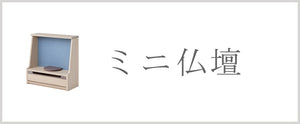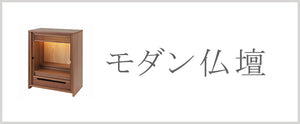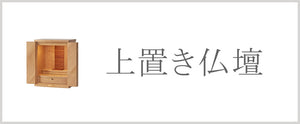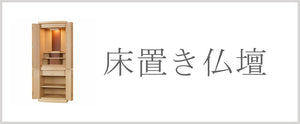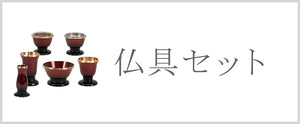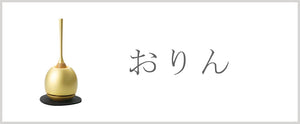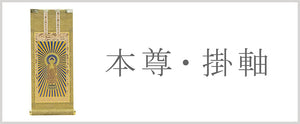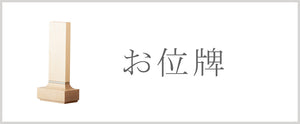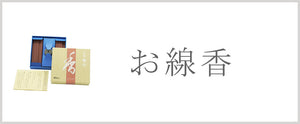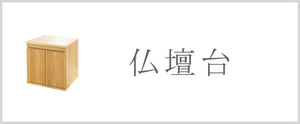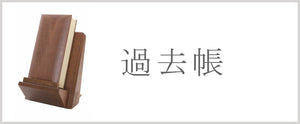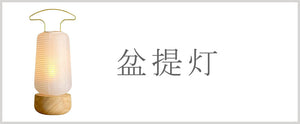Last updated:
Release date:
Many things are stored in the Buddhist altar, such as broken Buddhist altar equipment, unused candles, old photographs and letters.
These are all items that have been treasured by someone in the family, so when you try to organize them, you may feel anxious and wonder, "Is it okay to just throw them away?"
This time, we will explain how to dispose of the items around the Buddhist altar or in the drawers of the altar that you want to get rid of but don't know what to do with.
Is there a good time to dispose of or replace?
Even if you pray at your Buddhist altar on a daily basis, there may not be many people who frequently organize their drawers or replace their Buddhist altar equipment.
In the first place, is it okay to clean or dispose of Buddhist altar equipment on a day when there is nothing happening?
There are no hard and fast rules about when to dispose of, replace, or organize Buddhist altar items. However, in reality, many people do so in response to changes in their living environment or turning points in their lives.
Let's take a look at some typical examples.
- Year-end cleaning
- Before Obon and Higan
- Before the memorial service for your ancestors
- Moving and renovation
- When disposing of a Buddhist altar
These times are an opportunity to reconsider your Buddhist altar.
Even if you are usually busy, take this opportunity to check things like, "Are my Buddhist altar items still usable?" and "Are my drawers full?"
Recently, it seems that some people are also taking part in end-of-life planning.
How to dispose of Buddhist altar equipment
When disposing of Buddhist altar equipment, there is one thing to check.
"Whether or not it has a soul (nature)."
Basically, anything that has a soul (character) inside it needs to have the soul (character) removed.
What does it mean to remove one's soul (character)?
Buddhist altars and other Buddhist implements are religious objects, and only become objects of faith and memorial services once they have a soul (sokona) placed inside them. Therefore, when disposing of them, it is essential to remove the soul (sokona). The memorial service for removing this soul (sokona) is called "closing ceremony (memorial service)," "soul removal," or "sokona removal."
*In the case of Jodo Shinshu, there is no concept of putting the soul into the body, so there is no "soul putting" or "soul removing." Please be aware that "Buddha Entrance Ceremony," "Buddha Transfer (Seat) Ceremony," and "Owatamashi" ceremony are performed.
Something that contains a soul
The following two items have had a soul (spirit) infused into them when they were purchased.
- Principal image (Buddha statue or hanging scroll)
- memorial tablet
These are the key to faith and memorial services, and when they are purchased, they are brought to a temple and a soul (seikon) is placed inside them. Therefore, before disposing of them, the soul (seikon) must be removed.
However, in recent years, the number of people who do not have any relationship with temples has been increasing.
Ultimately, whether or not to hold a memorial service is up to the wishes of the person and their family.
Even if you do not hold a memorial service, be sure to clasp your hands together at the end to express your gratitude.
It is common for Buddhist altar equipment that has had its soul (spirit) removed to be collected by a Buddhist altar store or temple.
However, if something is said to have had its soul (spirit) removed, there are no religious rules regarding how to dispose of it.
It can be treated in the same way as Buddhist altar implements that "do not contain a soul (spirit)," as explained below.
Something that has no soul (spirit)
Buddhist altar implements other than the principal image and memorial tablets do not contain souls (spirits). Therefore, there is no specific method for disposing of them. They should be disposed of according to the classification rules of your local government, depending on the material.
However, if you feel it's difficult to throw it away with your household trash, you may want to consult a Buddhist altar store.
They may be able to collect it for you, but whether they will charge you or not will vary depending on the store, so be sure to check beforehand.
Consumables such as candles, incense, and ashes should be disposed of as household waste.
Things that are not Buddhist altar implements but are in the drawers of the Buddhist altar
The Buddhist altar may contain photographs of ancestors, drawings made as a child, letters, amulets, talismans, and important documents.
There may also be cases where cash was found inside, so when sorting, be sure to check each item one by one and separate what you need from what you don't.
Mementos such as photographs and letters
Please be careful not to just throw it away when disposing of it, as it contains personal information.
We recommend disposing of the item using the method below to make the information invisible.
- Shred it with a shredder or scissors
- Apply duct tape etc.
- Soak in bleach (photo only)
The photographs and letters stored in the Buddhist altar may be treasured by the family.
Nowadays, it is possible to digitize your photos before giving them away. If you find it difficult to do it yourself, consult a photo studio or electronics store.
Of course, you can also dispose of everything without digitizing it.
Amulets and talismans
The expiration date for amulets and talismans is approximately one year.
Ideally, you should return your old items to the shrine where you received them. If you live far away, some shrines will accept returns by mail.
If that is difficult, it is also fine to give the gift to a nearby shrine during your first visit of the year.
Important documents
Buddhist altar drawers often contain documents, some of which need to be kept in original form.
For example, pension booklets and pension-related documents, identification documents such as My Number cards and passports, qualification certificates, and wills.
Even if these documents belong to the deceased, do not dispose of them immediately; instead, make sure you really do not need them.
Regarding other documents, you should be careful not to dispose of them easily, as documents related to real estate, insurance contracts, and finances may be required at the time of inheritance.
Another option is to have the remains burned at a temple.
Another option is to have the remains burned at a temple or shrine.
In addition to Buddhist altar memorial services held about once a year in each local government, they are sometimes brought to fire festivals such as Sagicho and Dontoyaki, which are held around the New Year's holiday and on the 15th of January.There are conditions for use for both services. In particular, when it comes to cremation, environmental considerations must be taken into account, so they may not accept items depending on the material or size.
Check with the organising organisation in advance to see if you can bring your own.
Can I trade it in?
Some Buddhist altars and accessories are valuable works of art, made with excellent craftsmanship, or made from expensive materials. For this reason, we often hear people say that they no longer need them, but that it would be a shame to throw them away.
However, most Buddhist altar stores do not buy or trade in Buddhist altars or Buddhist accessories.
However, it seems that Buddhist statues and other items that have value as works of art may be purchased by antique shops.
Can I give it to someone else?
It is possible to donate a Buddhist altar or Buddhist implements to a relative or acquaintance, regardless of the relationship.
Be sure to properly remove any souls (spirits) that need to be removed beforehand. However, please note that the procedure may differ depending on the sect.
Old prayer beads can be repaired to look as good as new.
If you have any items stored in a drawer in your Buddhist altar, you can repair them and pass them on to your children or grandchildren.
There is meaning in continuing to use one for generations, but the beads may be made of precious materials that are no longer available today, such as coral, pearls, or jade. You can request repairs for your rosary at a specialist rosary store or Buddhist altar store.
Finally, be grateful and let go
Since organizing the Buddhist altar and Buddhist accessories is something we don't do often, many people feel anxious when it does happen. What makes Buddhist accessories different from other unwanted items is whether or not they have a "soul (spirit) in them."
Also, Buddhist altar drawers often contain mementos such as photographs and documents. Don't forget to erase any personal information from the items you dispose of.
Also, be careful not to accidentally throw away any necessary documents.
In any case, the altar and its accessories are things that have been treasured by your ancestors and family. In the end, give thanks to each and every one of them before letting them go.
Click here for an article on disposing of Buddhist altars
 What to do with the Buddhist altar at your parents' home? Explains how to dispose of an old, abandoned Buddhist altar, the costs involved, and how to burn it.
Nagomi Kobo TOP page is here >
What to do with the Buddhist altar at your parents' home? Explains how to dispose of an old, abandoned Buddhist altar, the costs involved, and how to burn it.
Nagomi Kobo TOP page is here >


